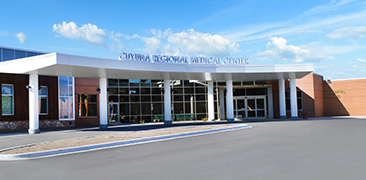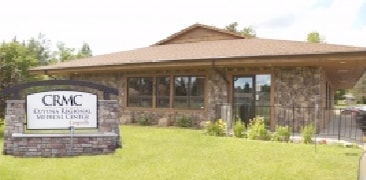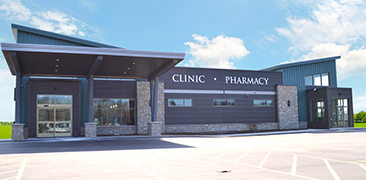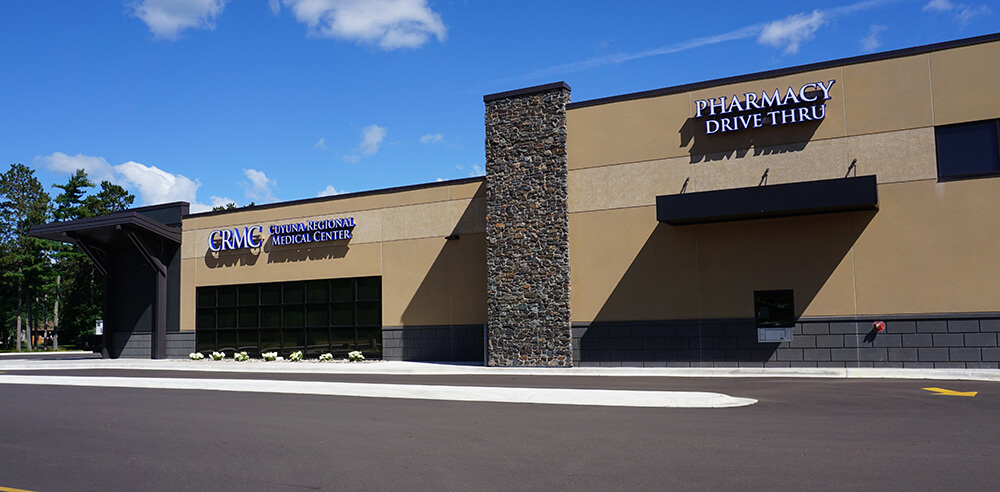Benefit from skilled orthopedic surgeons who’ve been specially trained in the surgical treatment of diseases and injuries of the knee.
If your knee is severely damaged by arthritis or injury, it may be hard for you to perform simple activities, such as walking or climbing stairs. You may even begin to feel pain while you are sitting or lying down.
If nonsurgical interventions are no longer helpful, you may want to consider total knee replacement surgery. Joint replacement surgery is a safe and effective procedure to relieve pain, correct leg deformity, and help you resume normal activities.
Description
A knee replacement might be more accurately termed a knee "resurfacing" because only the surface of the bones is replaced. There are four basic steps to a knee replacement procedure:
-
Prepare the bone. The damaged cartilage surfaces at the ends of the femur and tibia are removed along with a small amount of underlying bone.
- Position the metal implants. The removed cartilage and bone are replaced with metal components that recreate the surface of the joint. These metal parts may be cemented or "press-fit" into the bone.
- Resurface the patella. The undersurface of the patella (kneecap) is cut and resurfaced with a plastic button. Some surgeons do not resurface the patella, depending upon the case.
- Insert a spacer. A medical-grade plastic spacer is inserted between the metal components to create a smooth gliding surface.
Is Total Knee Replacement for You?
The decision to have total knee replacement surgery should be a cooperative one between you, your family, your primary care doctor, and your orthopaedic surgeon. Your doctor may refer you to an orthopaedic surgeon for a thorough evaluation to determine if you might benefit from this surgery.
When Surgery Is Recommended
There are several reasons why your doctor may recommend knee replacement surgery. People who benefit from total knee replacement often have:
- Severe knee pain or stiffness that limits everyday activities, including walking, climbing stairs, and getting in and out of chairs. It may be hard to walk more than a few blocks without significant pain and it may be necessary to use a cane or walker.
- Moderate or severe knee pain while resting, either day or night.
- Chronic knee inflammation and swelling that does not improve with rest or medications.
- Knee deformity — a bowing in or out of the knee.
- Failure to substantially improve with other treatments such as anti-inflammatory medications, cortisone injections, lubricating injections, physical therapy, or other surgeries.
Deciding to Have Knee Replacement Surgery
An important factor in deciding whether to have total knee replacement surgery is understanding what the procedure can and cannot do.
Most people who have total knee replacement surgery experience a dramatic reduction of knee pain and a significant improvement in the ability to perform common activities of daily living. But total knee replacement will not allow you to do more than you could before you developed arthritis.
With normal use and activity, every knee replacement implant begins to wear in its plastic spacer. Excessive activity or weight may speed up this normal wear and may cause the knee replacement to loosen and become painful. Therefore, most surgeons advise against high-impact activities such as running, jogging, jumping, or other high-impact sports for the rest of your life after surgery. Realistic activities following total knee replacement include unlimited walking, swimming, golf, driving, light hiking, biking, ballroom dancing, and other low-impact sports. With appropriate activity modification, knee replacements can last for many years.
CRMC Orthopaedics offers the latest robotic technology for knee replacement surgery. It is tailored to each patient with the goal to get patients back to optimal function as soon as possible.
The VELYS Robotic-Assisted Solution is a robotic technology that helps surgeons perform more precise knee replacement using data tailored to each patient’s anatomy. It has been utilized at CRMC since 2021 after coming onto the market. The technology is designed to assist surgeons implanting knees with even greater precision.
Arthroscopy is a surgical procedure orthopaedic surgeons use to visualize, diagnose, and treat problems inside a joint. The word arthroscopy comes from two Greek words, "arthro" (joint) and "skopein" (to look). The term literally means "to look within the joint."
In an arthroscopic examination, an orthopaedic surgeon makes a small incision in the patient's skin and then inserts pencil-sized instruments that contain a small lens and lighting system to magnify and illuminate the structures inside the joint. Light is transmitted through fiber optics to the end of the arthroscope that is inserted into the joint. By attaching the arthroscope to a miniature television camera, the surgeon can see the interior of the joint through this very small incision.
The television camera attached to the arthroscope displays the image of the joint on a television screen, allowing the surgeon to look throughout the knee. This lets the surgeon see the cartilage, ligaments, and the undersurface of the kneecap. The surgeon can determine the amount or type of injury and then repair or correct the problem if it is necessary.











